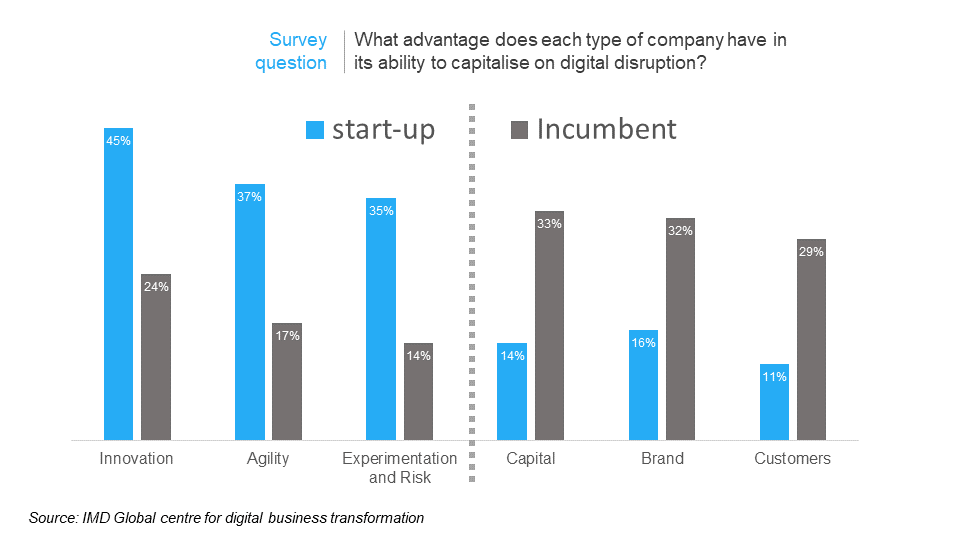Businesses and organisations are being transformed and disrupted faster than ever, largely driven by the direct and indirect impacts of accelerating technological change. And for some key disruptive technologies such as AI, advanced data analytics and blockchain, the impact is only just starting to be felt.
For many businesses threatened by start-up disruptors, this is already a life and death situation. Think AirBnb, Tesla and Uber and effect that they are already having on their particular markets.
However established business can fight back, and they can do it by reinventing how they lead.
 Research including that of IMDs Global Centre for Business Transformation shows that when it comes to digital disruption, established businesses can have powerful competitive advantages over their disruptors through their capital, brand and huge customer bases.
Research including that of IMDs Global Centre for Business Transformation shows that when it comes to digital disruption, established businesses can have powerful competitive advantages over their disruptors through their capital, brand and huge customer bases.
“Incumbents can win big by combining digital business agility with their traditional strengths: Brand equity, access to capital and large customer bases”
IMD Global centre for digital business transformation
To do this however, they need to unlock their innovation, agility, experimentation and risk taking – qualities that are all created (or blocked) by your people and where start-ups typically enjoy a considerable competitive advantage.
The good news for incumbents is that innovation and agility are created internally, through their leadership and the resultant culture.
Unfortunately the very leadership approaches that created the processes and culture that built the historical success of many established businesses is not conducive to lead in this new era. For example, how many established businesses have leadership cultures that are comfortable with a 90% failure rate of new initiatives, something the start-up world thinks is normal? No wonder innovation and true digital agility evades many organisations.
Instead we need people centric leadership approaches unencumbered by legacy conditioning – one that fosters risk taking, innovation, rapid idea creation and customer testing from the bottom up. This wholesale leadership and culture change requires commitment, investment and effort – but for many organisations this could mean the difference between survival or corporate death.
So if you are an established business, looking over your shoulder at your (potential) disruptors, you can fight back and use your incumbent strengths to give you powerful competitive advantage. To do this you need to fundamentally reappraise how you lead your business, often overcoming barriers that you’ve unintentionally put in place which hamper innovation, agility and experimentation.








